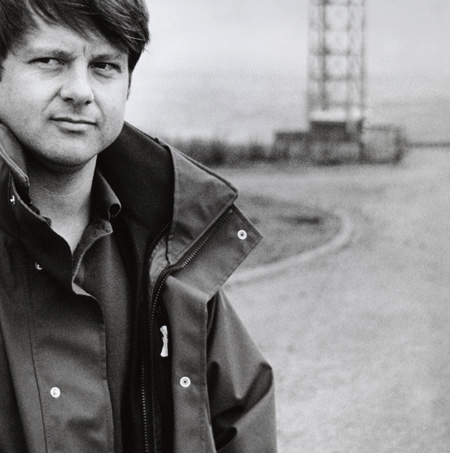| The
work we do at the radar station on Titterstone Clee is a lot less glamorous
than you’d think. We send a radar picture of all aircraft flying
within about 100 miles of here to air traffic control centres. Controllers
can then communicate with the aircraft remotely using our radio masts
– the ones here on Titterstone to speak to the aircraft and the
ones on Brown Clee to get messages back.
We are quite passive here. The information all goes one way –
from us to air traffic control. We don’t even know who uses the
information we send. We never get any feedback.
We simply maintain the site. General wear and tear, power cuts, that
sort of thing. But as the equipment becomes more reliable, there is
less to do. There used to be about two dozen people working here, now
we just have half a dozen. I’m sure it’s going the way of
lighthouses. In time this place won’t be manned permanently. I’ll
still be fixing it – but I’ll be driving from one station
to
another.
I love it up here especially in the winter; the way the ice forms on
the fences. It’s so raw. The temperature quite often drops to
minus 10°C. With the high winds, it never snows downwards, it always
snows across.
The atmosphere of the place is quite humbling. From up here you have
got such a vast view of the countryside, it makes you aware how small
you are. But it makes you feel a bit more alive.
The light is always changing – there is always something going
on in the weather. You see little micro-climates, bands of rain moving
across, or thunder and lightning somewhere in the distance. You also
see a lot of wildlife. Sparrow hawks and kestrels hover at about the
level of our windows, even though they are actually quite high off the
ground.
With our bird’s-eye view we can see people riding across the common,
or walking on the hill. Occasionally people come up and ask if they
can paraglide off the top. There are also parties of schoolchildren,
perhaps on field trips. It always seems to be raining when they come
and you see them standing around huddled up in their little cagoules.
We also get the joy-riders, who come up at night to dump their cars
and set them on fire. People always say it’s kids from Birmingham
but no one really knows. I guess word gets around that it’s the
kind of place you can wreck a car and not get disturbed.
We don’t really have any dealings with the other people who use
the hill, like the farmers. We have our compound and that’s it.
Sometimes the sheep get locked inside for a few hours. It’s quite
useful, they keep the grass short. The farmers never seem to want to
come up and reclaim them. But the sheep are smart, they just walk across
the cattle grids. They always get out eventually.
There has been so much land-use here over the centuries, with things
always changing and going out of use. The radar station itself has been
on this site since 1963 and it is constantly evolving. Eventually it
will become derelict and people will come up here and wonder what the
buildings were all used for.
|
